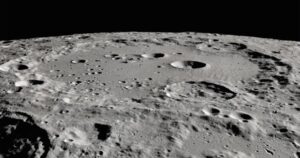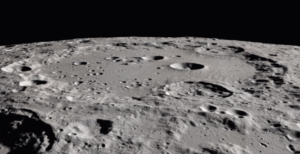
The Starship will be the first to fly to the moon, and China will not win the moon race, said Elon Musk, founder of SpaceX.
SpaceX is “moving at lightning speed compared to the rest of the space industry,” he wrote on social media. According to Musk, Starship will be the first spacecraft to complete a full lunar mission.
The spacecraft is scheduled to land humans on the moon as part of NASA’s Artemis program in 2027. Musk wants to certify Starship for human flights as early as next year. China plans to make a manned landing on the moon in 2030.
SpaceX’s reusable rocket system consists of the Starship spacecraft and the Super Heavy launch vehicle. It is over 120 meters tall. It is taller than any other rocket ever built in the world. The Super Heavy launch vehicle is twice as powerful as NASA’s Space Launch System (SLS) heavy rocket, which is being developed for manned flights to the Moon.
The rocket has already been launched on 11 test orbital flights, five of which ended in failure.

NASA plans to build a settlement for astronauts on the Moon by 2035, acting head of the agency Sean Duffy said at the International Astronautical Congress in Sydney.
“We are going to create sustainable living conditions for people on the Moon,” Duffy said. “Not just an outpost, but an entire settlement.”
According to him, nuclear energy will be used to power the settlement. The reactor, weighing less than 15 tons, will be capable of producing 100 kW of electricity. This is enough to provide the lunar base with electricity for 14 lunar nights, when solar panels will be ineffective.
Duffy said that the US “will return to the moon, and this time, when we plant our flag, we will stay there.” The settlement will be able to permanently host astronauts and will be built from materials found on the surface of the Moon.
As early as February next year, NASA will launch the Artemis II mission with four astronauts on board in the first manned expedition to the Moon in more than 50 years. The astronauts will not land on the surface of Earth’s natural satellite. During the Artemis II mission, the astronauts will test the Space Launch System rocket and the Orion spacecraft, which will eventually take humans to the moon. The crew will fly around the moon for 10 days before returning to Earth.
But a serious test for NASA awaits in mid-2027 with the launch of the Artemis III mission, which plans to land two astronauts near the south pole of the Moon. In September, Duffy said that as part of the Artemis III mission to explore the Moon, which NASA plans to carry out in mid-2027, astronauts will stay on the planet for eight to twelve days. The data they collect on the geology and conditions around the South Pole will be used to prepare for the ultimate goal of building a permanent base on the Moon.

China on Friday launched an automated spacecraft on a nearly two-month mission to collect rocks and soil from the moon’s back side, becoming the first country to undertake such an ambitious endeavor, Reuters reported. China’s largest rocket, Long March-5, launched at 17:27 Beijing time (12:27 Kiev time) from the Wenchang spaceport on the southern island of Hainan with the Chang’e-6 probe weighing more than 8 tons.
Chang’e-6’s mission is to land in the South Pole-Eitken basin on the back side of the moon, which is eternally facing away from Earth, after which it will retrieve and return samples.
The launch was another milestone in China’s lunar and space exploration program.
“It remains a mystery to us how China was able to develop such an ambitious and successful program in such a short time,” said Pierre-Yves Meslain, a French researcher working on one of the Chang’e-6 mission’s scientific objectives.
In 2018, Chang’e-4 made the first unmanned landing on the back side of the moon. In 2020, Chang’e-5 delivered lunar samples for the first time in 44 years, and Chang’e-6 could make China the first country to get samples from the “hidden” side of the moon.
Earlier, the launch of the Quequiao-2 transponder satellite, designed to link China’s lunar landers with ground stations, was reported.

The Vikram lander of India’s Chandrayaan-3 Automated Interplanetary Station (Chandrayaan-3), which landed on the Moon on Wednesday, has successfully established communication with the Mission Control Center in Bangalore, the Indian Space Research Organization (ISRO) reported.
“Communication has been established between the Chandrayaan-3 lander and the MOX-ISTRAC (Mission Operations Center for Telemetry, Surveillance and Control) located in Bangalore,” the organization said in a statement.
The landing was made at 18:02 Indian time (15:32 sq. m.) in the area of the unexplored South Pole of the Moon.
Thus, India became the fourth country after the USSR, the United States and China to land its own vehicle on the Moon.
The LVM3 rocket with the Chandrayaan-3 automatic interplanetary station was launched on July 14 from the launch pad of the Satish Dhawan Space Center, located on the island of Sriharikota. On August 5, the station was launched into lunar orbit.
After the landing, the Pragyan lunar rover, equipped with various research equipment, will move off the platform and begin chemical analysis of the surface of the Earth’s natural satellite. The mission of the 20 kg lunar rover is designed for 14 Earth days.
The previous attempt to send a lander and lunar rover to the Moon was made in 2019 as part of the Chandrayaan-2 mission. Then the orbiter managed to enter lunar orbit, but due to communication problems, specialists were unable to correct the lunar position of the lander, which separated from the interplanetary station and crashed into the lunar surface.
The Chandrayaan-2 mission orbiter remained in orbit and continues to collect scientific data about the Earth’s natural satellite. Chandrayaan-3 does not include such a mission.

The Indian Space Research Organization (ISRO) plans to send its Chandrayaan-3 (Chandrayaan-3) automated interplanetary station to the Moon on Friday.
The Chandrayaan-3 mission is scheduled to be launched on July 14, 2023, at 2:35 p.m. Indian time (12:05 a.m. QT) from the launch pad of the Satish Dhawan Space Center located on Sriharikota island.
According to the organization’s plan, the spacecraft will be launched into orbit using an LVM-3 launch vehicle, after which the probe will begin its autonomous flight to near-lunar orbit.
The Chandrayaan-3 station consists of three components – a landing module, a propulsion module and a lunar rover – whose main purpose is to demonstrate and test the technologies required for interplanetary missions.
After the spacecraft enters lunar orbit, its landing module will have to make a soft landing on the surface of the Moon, then the rover, equipped with various research equipment, will move off the platform and begin chemical analysis of the surface of the natural satellite of the Earth. The lunar rover mission is designed to last 14 Earth days.
A previous attempt to send a landing module and a lunar rover to the Moon was made in 2019 as part of the Chandrayaan-2 mission. Then the orbiter managed to enter the lunar orbit, but due to communication problems, specialists were unable to correct the landing of the landing module separated from the interplanetary station, as a result of which it crashed on impact with the lunar surface.
Orbiter mission Chandrayaan-2 remained in orbit and continues to collect scientific data on the Earth’s natural satellite. No such orbiter mission is planned for Chandrayaan-3.

The China Manned Spaceflight Program Administration (CMSA) on Monday announced plans to send astronauts (Chinese taikonauts) to the surface of the moon before 2030.
“According to the plan for a project to explore the moon by taikonauts, Chinese taikonauts will land on the moon for the first time before 2030, with two taikonauts driving a lunar rover to conduct scientific research,” the administration said in a statement on its website.
China has previously announced plans to land taikonauts on the moon and build a lunar research base there in the 2030s. The South Pole was suggested as a preliminary landing site because of the abundance of sunlight in the area and the presence of ice reserves from which water could be extracted.
China’s main rival in the “moon race” is the United States. In April, Bill Nelson, head of the U.S. National Aeronautics and Space Administration (NASA) said that the U.S. space agency expects to send astronauts to the moon in late 2025 or 2026 under the Artemis national lunar program.